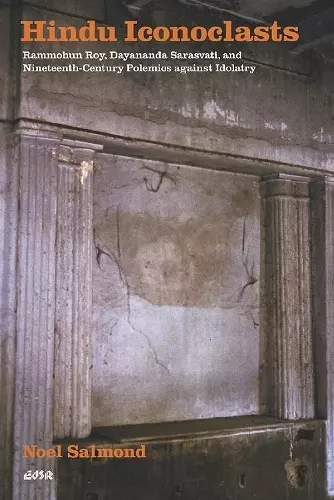Hindu Iconoclasts
Rammohun Roy, Dayananda Sarasvati, and Nineteenth-Century Polemics Against Idolatry
Format:Hardback
Publisher:Wilfrid Laurier University Press
Published:30th May '04
Currently unavailable, and unfortunately no date known when it will be back

Why, Salmond asks, would nineteenth-century Hindus who come from an iconic religious tradition voice a kind of invective one might expect from Hebrew prophets, Muslim iconoclasts, or Calvinists?
Rammohun was a wealthy Bengali, intimately associated with the British Raj and familiar with European languages, religion, and currents of thought. Dayananda was an itinerant Gujarati ascetic who did not speak English and was not integrated into the culture of the colonizers. Salmond's examination of Dayananda after Rammohun complicates the easy assumption that nineteenth-century Hindu iconoclasm is simply a case of borrowing an attitude from Muslim or Protestant traditions.
Salmond examines the origins of these reformers' ideas by considering the process of diffusion and independent invention - that is, whether ideas are borrowed from other cultures, or arise spontaneously and without influence from external sources. Examining their writings from multiple perspectives, Salmond suggests that Hindu iconoclasm was a complex movement whose attitudes may have arisen from independent invention and were then reinforced by diffusion.
Although idolatry became the symbolic marker of their reformist programs, Rammohun's and Dayananda's agendas were broader than the elimination of image-worship. These Hindu reformers perceived a link between image-rejection in religion and the unification and modernization of society, part of a process that Max Weber called the ""disenchantment of the world."" Focusing on idolatry in nineteenth-century India, Hindu Iconoclasts investigates the encounter of civilizations, an encounter that continues to resonate today.
"Hindu Iconoclasts stretches further beyond the initial scope of its premise, contemplating a link between religious image-rejection and the unification and modernization of society in a process Max Weber has termed 'disenchantment of the world', in a seminal discourse highly recommended for religious history and studies shelves." -- Margaret Lane -- The Midwest Book Review, 200502
"Graduate students and advanced undergraduate students will find considerable food for thought in Salmond's book....Salmond covers with admirable concision a range of topics critical to the study of modern India as well as to the history of religions in general." -- Herman Tull, Princeton University -- Religious Studies Review, Vol 35, no 1, 200601
"[Salmond] engages in a nuanced analysis...paying detailed attention to social, historical, and political contexts....Insightful and engaging work." -- Chandrima Chakraborty -- University of Toronto Quarterly, Letters in Canada, 200610
ISBN: 9780889204195
Dimensions: 235mm x 158mm x 17mm
Weight: 500g
192 pages